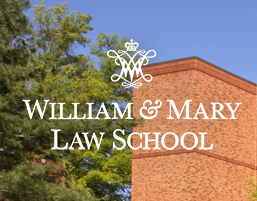William & Mary Bill of Rights Journal
Abstract
This Symposium Essay discusses the roles of history and memory within the realm of state constitutional law. Building on Professor Balkin’s observations, I offer two claims. The initial argument, delineated in Part I, is descriptive. While the practice of state constitutional law often mirrors that of federal constitutional interpretation, the use of history in state constitutional interpretation has unique characteristics, both with respect to text and ethos. Regarding textual analysis, understanding the language of a state constitution often involves engaging with a concept referred to by some scholars as “interconstitutionalism.” This phenomenon occurs when a single governmental body has operated under multiple constitutions. Often, language present in the current constitution can be traced back to similar or identical terms in preceding documents. This historical overlap leads to complex interpretive challenges. Further complexity arises with the application of originalism to these challenges, compelling interpreters to determine the precise “original” moment to consider: the adoption of the new constitution or that of an older iteration. The relatively frequent adoption of new state constitutions—beyond mere amendments—introduces interpretative principles that are unnecessary at the federal level, fostering historical interactions that are distinct from those in federal constitutional practice. Moreover, state courts sometimes invoke the ethos and unique histories of their states when interpreting the proper reach of rights-based and structural doctrines. These moves are especially prominent when a state court is interpreting a state constitutional provision differently than the way a parallel provision has been interpreted in the federal constitution or in other state constitutions.
The second assertion, presented in Part II, adopts a more aspirational tone. Numerous scholars have advocated for the inclusion of marginalized voices in historical arguments. Despite being in the majority, the voices of women and people of color were often historically suppressed through structural and physical violence. Therefore, their historical views and voices can unwittingly be overlooked today without attention and care. This is not a minor problem to be treated as an unfortunate feature of the past before quickly moving on and deploying historical arguments that continue to mute and ignore their perspectives. I have previously contended that neglecting to incorporate these perspectives introduces ethical, democratic, and empirical challenges. In Part II of this Essay, I observe that the distinctive nature of state constitutional analysis suggests that incorporating marginalized voices into the historical narrative of state constitutions may differ from the federal approach across both dimensions explored in Part I: textual interpretative principles and ethos. State constitutions present both unique opportunities and unique risks.
This abstract has been taken from the author's introduction.

